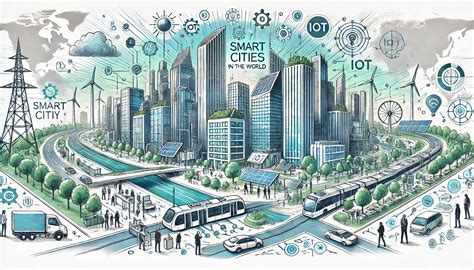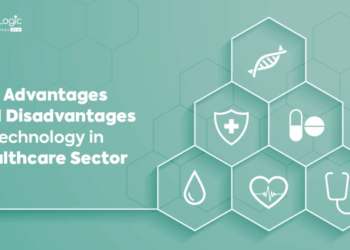As Smart Infrastructure and the Internet of Everything take the spotlight, readers are invited into a realm of innovation and connectivity. This introductory passage sets the stage for a deep dive into the fascinating world of interconnected technologies and their impact on our daily lives.

Exploring the intricate web of Smart Infrastructure and the Internet of Everything, this overview provides a comprehensive look at the key components, benefits, challenges, and successful implementation of these cutting-edge systems.
Overview of Smart Infrastructure and the Internet of Everything
Smart Infrastructure refers to the integration of physical infrastructure with digital technology to enhance efficiency, sustainability, and connectivity. This includes systems such as smart buildings, smart transportation, and smart energy grids. On the other hand, the Internet of Everything (IoE) encompasses the network of interconnected devices, sensors, and data that enable communication and data exchange between physical and digital systems.The relationship between Smart Infrastructure and the Internet of Everything lies in their interconnected nature.
Smart Infrastructure relies on the IoE to gather data, analyze patterns, and make informed decisions in real-time. The IoE, in turn, benefits from Smart Infrastructure by utilizing the physical infrastructure to collect data and optimize operations.
Examples of Impact
- Smart Buildings: Sensors embedded in buildings collect data on energy usage, occupancy levels, and temperature to optimize energy consumption and enhance occupant comfort.
- Smart Transportation: Connected vehicles and traffic management systems use data from sensors to improve traffic flow, reduce congestion, and enhance safety on the roads.
- Smart Energy Grids: IoT devices integrated into energy grids enable utilities to monitor energy distribution, detect faults, and implement predictive maintenance to ensure reliable and efficient energy supply.
Components of Smart Infrastructure
In order to create a successful Smart Infrastructure system, several key components work together to enable efficient operations and connectivity.
Sensors
Sensors play a crucial role in Smart Infrastructure by collecting real-time data on various aspects such as traffic flow, energy consumption, air quality, and more. These sensors provide valuable information that is used to optimize systems, improve decision-making, and enhance overall efficiency.
Data Analytics
Data analytics is essential for managing Smart Infrastructure as it involves processing and analyzing the vast amount of data collected by sensors. By utilizing advanced analytics tools and algorithms, this data can be transformed into actionable insights, enabling predictive maintenance, resource optimization, and improved operational performance.
Benefits of Smart Infrastructure and the Internet of Everything
Smart Infrastructure offers numerous benefits that enhance efficiency, sustainability, and connectivity. By integrating the Internet of Everything, these advantages are further amplified, creating a more interconnected and intelligent infrastructure system.
Improved Efficiency
Smart Infrastructure optimizes operations through real-time data collection and analysis. By leveraging sensors, IoT devices, and advanced analytics, organizations can monitor and manage various systems more effectively. This leads to streamlined processes, reduced downtime, and increased productivity.
Enhanced Sustainability
The integration of Smart Infrastructure promotes sustainability by enabling better resource management. Through smart energy grids, waste management systems, and water conservation measures, organizations can minimize environmental impact and operate in a more eco-friendly manner. This not only benefits the planet but also helps reduce operational costs in the long run.
Greater Connectivity
The Internet of Everything plays a crucial role in enhancing connectivity within Smart Infrastructure. By connecting people, processes, data, and things, organizations can create a networked ecosystem that facilitates seamless communication and collaboration. This interconnected environment enables faster decision-making, improved coordination, and enhanced innovation.
Cost Savings
Smart Infrastructure can lead to significant cost savings by optimizing resource utilization and reducing waste. By implementing predictive maintenance strategies, organizations can avoid costly downtime and extend the lifespan of critical infrastructure components. Additionally, smart energy solutions help minimize energy consumption, resulting in lower utility bills and operational expenses.
Improved Safety and Security
Smart Infrastructure enhances safety and security by implementing advanced monitoring and surveillance systems
. Through the use of intelligent sensors, cameras, and access control systems, organizations can detect potential hazards, unauthorized access, or security breaches in real-time. This proactive approach to safety helps prevent incidents and ensures a secure environment for employees and assets.
Challenges and Risks Associated with Smart Infrastructure
Smart infrastructure brings numerous benefits, but it also comes with its own set of challenges and risks that need to be addressed for successful implementation.
Potential Cybersecurity Risks in Smart Infrastructure
Cybersecurity is a major concern in smart infrastructure projects due to the interconnected nature of devices and systems. Hackers can exploit vulnerabilities in the network to gain unauthorized access, disrupt operations, or steal sensitive data.
- Weak encryption protocols and inadequate security measures can make smart infrastructure systems susceptible to cyberattacks.
- Unauthorized access to critical infrastructure components can lead to service disruptions, safety hazards, and financial losses.
- Malware and ransomware attacks pose a significant threat to the integrity and security of smart infrastructure networks.
Challenges of Interoperability Between Different Smart Devices
Interoperability issues arise when different smart devices and systems from various manufacturers need to communicate and work together seamlessly within a smart infrastructure ecosystem.
- Compatibility issues between devices using different communication protocols can hinder data sharing and integration.
- Lack of standardized interfaces and protocols can complicate the process of connecting and controlling multiple devices within a smart infrastructure network.
- Scalability challenges may arise when expanding or upgrading smart infrastructure systems due to the need for interoperability between new and existing devices.
Data Privacy Concerns in Smart Infrastructure Projects
Data privacy is a critical issue in smart infrastructure projects, as they involve the collection, storage, and analysis of vast amounts of data from various sources.
- Personal information collected by smart devices, such as location data and user behavior, must be safeguarded to prevent unauthorized access or misuse.
- Data breaches and leaks can have serious consequences, including identity theft, fraud, and damage to individual privacy rights.
- Compliance with data protection regulations and standards is essential to ensure that data privacy concerns are addressed effectively in smart infrastructure projects.
Implementation of Smart Infrastructure Projects
Implementing Smart Infrastructure projects involves a detailed process of planning and designing to ensure the successful integration of technology and infrastructure.
Planning and Designing Smart Infrastructure Projects
Before initiating a Smart Infrastructure project, a comprehensive assessment of the current infrastructure, identification of key areas for improvement, setting clear objectives, and creating a detailed implementation plan are essential steps.
- Conducting feasibility studies to determine the viability of the project.
- Engaging stakeholders and experts to gather input and insights.
- Developing a detailed design that incorporates the latest technologies and considers scalability and sustainability.
- Creating a timeline and budget that align with the project goals.
Role of Government Regulations
Government regulations play a crucial role in the implementation of Smart Infrastructure initiatives by setting standards, ensuring compliance, and fostering innovation.
- Regulations may include data privacy laws, cybersecurity requirements, and environmental regulations.
- Government incentives and funding programs can also support the development of Smart Infrastructure projects.
Examples of Successful Smart Infrastructure Projects
Several countries around the world have implemented successful Smart Infrastructure projects that have transformed cities and improved the quality of life for residents.
- Smart Grids in Singapore:Singapore's smart grid system has improved energy efficiency, reduced carbon emissions, and enhanced grid reliability.
- Smart Transportation in Barcelona:Barcelona's smart transportation system integrates real-time data to optimize traffic flow, reduce congestion, and enhance public transportation services.
- Smart Buildings in Japan:Japan has implemented smart building technologies that enhance energy efficiency, optimize space utilization, and improve occupant comfort.
Closing Summary
In conclusion, the realm of Smart Infrastructure and the Internet of Everything opens up a world of possibilities, from enhanced efficiency to sustainable practices. By delving into this realm, we pave the way for a smarter, more interconnected future.
Question & Answer Hub
What is the Internet of Everything?
The Internet of Everything refers to the connection of people, processes, data, and things to enable intelligent decision-making and create new possibilities.
How do sensors contribute to Smart Infrastructure?
Sensors play a crucial role in Smart Infrastructure by collecting data on various parameters, enabling real-time monitoring and analysis for optimized operations.
What are some challenges in implementing Smart Infrastructure projects?
Challenges may include cybersecurity risks, interoperability issues between devices, and addressing data privacy concerns to ensure the success of Smart Infrastructure initiatives.
 Exploring the intricate web of Smart Infrastructure and the Internet of Everything, this overview provides a comprehensive look at the key components, benefits, challenges, and successful implementation of these cutting-edge systems.
Exploring the intricate web of Smart Infrastructure and the Internet of Everything, this overview provides a comprehensive look at the key components, benefits, challenges, and successful implementation of these cutting-edge systems.









